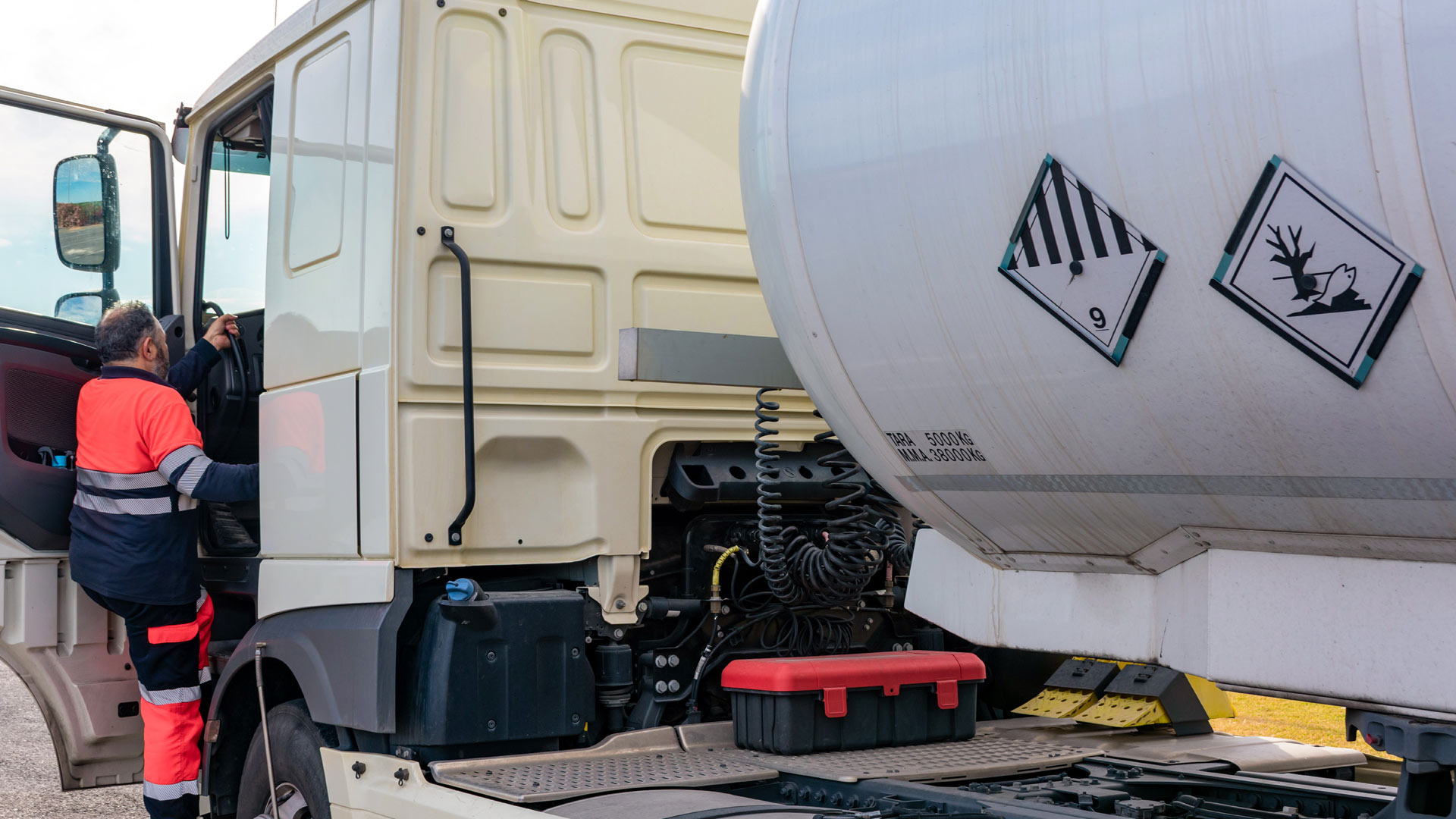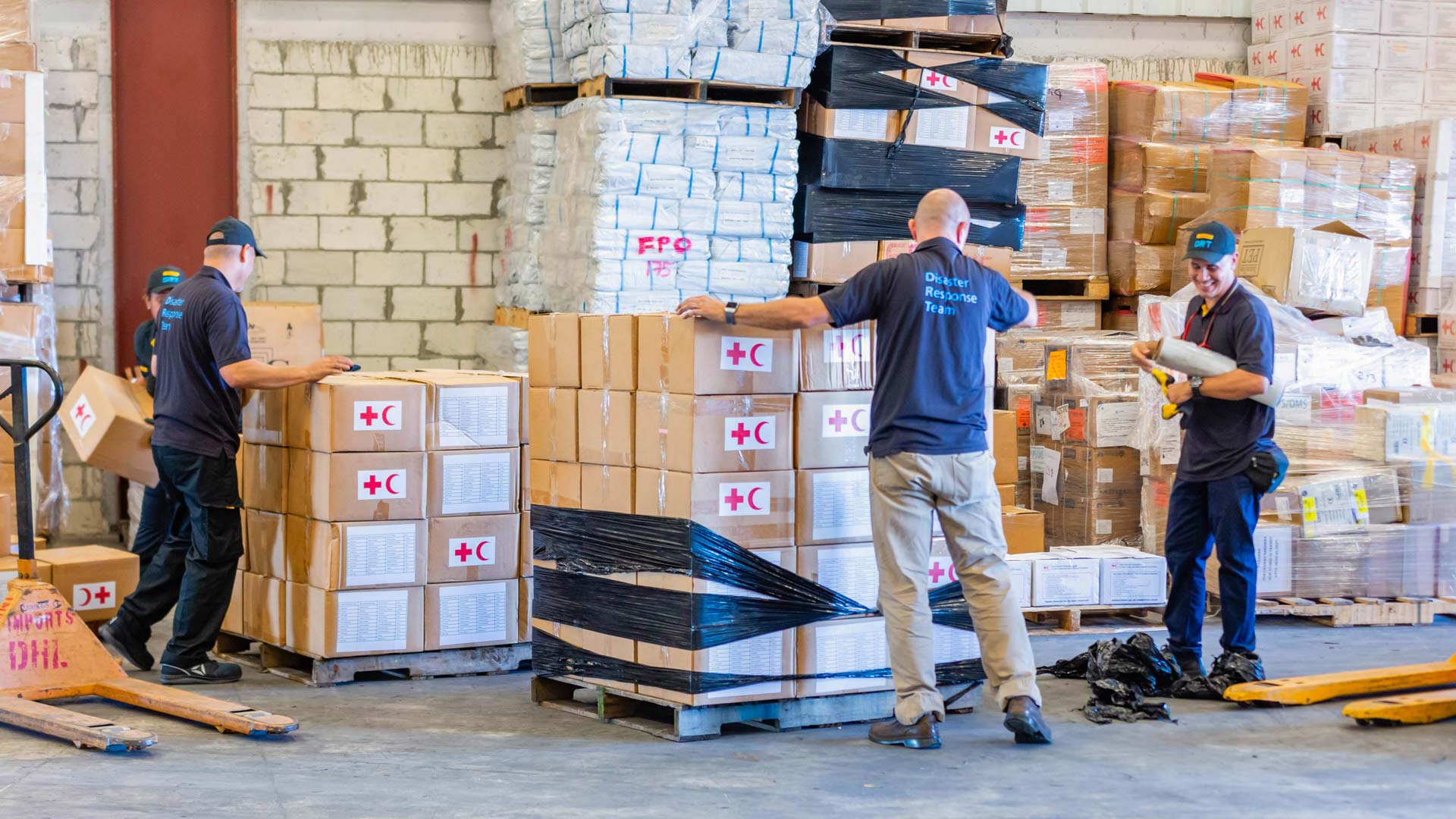
Industrial societies depend on dangerous goods – and on their carriage. When transporting dangerous goods, the top priority is to protect people’s health and the environment and avert threats to public safety. For this reason, there are international regulations for the secure transport of such goods. We introduce the most important rules and explain what companies need to observe.
What Qualifies as Dangerous Goods?
All international and national regulations on the transport of dangerous goods are based on the UN Recommendations on the Transport of Dangerous Goods. Here, the dangerous goods are specified. These UN definitions are the basis for more detailed regulations in the EU Directive on Dangerous Substances and the Directive on the Transport of Dangerous Goods.
National regulations in Europe may differ slightly about the exact transport requirements. But the basic understanding of which goods are to be declared as dangerous goods is common. Dangerous goods are substances and objects which, due to their nature, properties, or condition, may present a hazard in connection with transport.
The Nine UN Classes of Dangerous Goods
The UN Recommendations distinguish between nine classes of dangerous goods, some of which are subdivided into further subcategories (classes 4, 5 and 6). Anyone transporting these goods must comply with the legal transport regulations and label the dangerous goods. Common dangerous goods have a four-digit UN number that identifies them internationally. Individual codes are used for other substances.
1. Explosives
2. Gases
3. Flammable liquids
4.1 Flammable solids, self-reactive substances, and solid desensitized explosives
4.2 Substances liable to spontaneous combustion
4.3 Substances that in contact with water emit flammable gases
5.1 Oxidizing substances
5.2 Organic peroxides
6.1 Toxic substances
6.2 Infectious substances
7. Radioactive material
8. Corrosive substances
9. Miscellaneous dangerous substances and articles

Examples for dangerous transport goods according to this classification are materials that can cause explosions (such as explosives or ammunition), flammable liquids (such as gasoline) or flammable gases. Self-reactive substances are, for instance, white or yellow phosphorus or aluminium dust. Examples of substances that emit flammable gases in contact with water are potassium or sodium. Substances that are flammable include highly concentrated hydrogen peroxide solutions, chlorates, or nitrates. Lithium-ion batteries are also hazardous goods and belong to Class 9. Irrespective of the risk of fire and explosion, many hazardous substances endanger drinking water and bodies of water.
Regulations for the Transport of Dangerous Goods
In order to implement the UN recommendations, which go far beyond the mere definition of hazardous substances, at all times and everywhere, there are international and European regulations:
- European Agreement concerning the International Carriage of Dangerous Goods by Road (ADR)
- European Agreement concerning the International Carriage of Dangerous Goods by Inland Waterways (ADN)
- Regulation concerningtheInternational CarriageofDangerous GoodsbyRail (RID)
- For aviation: International Air Transport Association – Dangerous Goods Regulation (IATA-DGR)
- For sea freight: International Maritime Dangerous Goods Code (IMDG-Code)
These international and European regulations are each supplemented by national regulations in individual countries.
How May Dangerous Goods Be Transported?
The numerous sets of regulations indicate that dangerous goods can be transported by any mode of transport: road, rail, air, as well as sea and inland waterways. Specific rules apply in each of these modes. In any case, the top priority is to protect the environment from the hazardous substance through appropriate packaging using special containment systems. The principle is: the more dangerous the contents, the safer the containment system must be – this ranges from special bags for self-heating ground rubber to Castor containers for nuclear waste.
For safety reasons, certain materials are transported primarily by rail and ship. In Germany, for example, particularly dangerous goods (e.g., specific explosives, hydrofluoric acid, or propane) may only be transported by road if carriage by rail or inland waterway is not possible. Official proof of this must be provided to the competent authorities.
What Do Companies Need to Know About Transporting Dangerous Goods?
Anyone who handles hazardous goods and wants to transport them must know the applicable legal regulations in detail. After all, anyone who violates dangerous goods regulations must expect to pay severe fines throughout Europe. In the case of particularly serious violations, even imprisonment is possible in some places. Special attention must be paid to the classification of hazardous substances, the packaging and labeling of the dangerous goods, the equipment and inspection of the vehicles used, and the training of personnel.
Staff Training
All employees involved in the transport of dangerous goods must be trained according to their individual tasks and are subject to special safety obligations specified in the ADR, AND, or RID. Truck drivers transporting dangerous goods, for example, must obtain an ADR certificate for hazardous goods drivers in most countries. This usually requires special training courses that must be recognized by authorities or chambers of industry and commerce. Drivers of tank trucks and of explosive or radioactive materials often need to perform additional training. Similar regulations apply to employees in (inland) shipping and air traffic.
Safety Advisers for the Transport of Dangerous Goods
In EU companies involved in dangerous goods logistics, there is an obligation to appoint dangerous goods safety advisers. They monitor whether all dangerous goods regulations are complied with. Dangerous goods safety advisers also require special training. In a directive, the EU specifies the “minimum examination requirements for safety advisers for the transport of dangerous goods by road, rail or inland waterway”.

Equipment
Only approved and inspected vehicles and packaging may be used. There are also clear requirements in the ADR regarding the protective equipment of the personnel. This includes, for example, safety vests, warning lights, an ABC fire extinguisher, breathing apparatus, or devices for protecting the sewer system. The specific equipment prescriptions depend on the respective dangerous goods class of the load.
And of course, the transhipment points such as the logistics centers must also meet exceptionally high safety standards. Depending on the individual country, regulations on emission control and special fire protection provisions may apply.
Labeling Requirement
The necessity of labeling the goods being transported is obvious: Not only those engaged in transport, but also rescue forces must always be able to recognize precisely and quickly what is being carried. For this purpose, there are internationally standardized symbols, warning signs, stickers, and slips of paper. The danger class can be identified via this marking, which also shows the UN number. Despite the international validity of the labeling, a leaflet in the official language of the country in which the transport takes place must be supplied. This describes the dangerous goods and the necessary protective measures after any accidents.
The marking on the vehicle must be weather-resistant and contrasting in color. The shipping packages themselves also require labeling in the form of a square standing on its tip and measuring at least 100x100 millimeters. The different dangerous goods pictograms can be downloaded from the website of the UN Economic Commission for Europe.
The New German DHL Site in Erlensee
DHL Freight opened a new logistics facility in Erlensee in the greater Frankfurt am Main area in 2022. With this new site, DHL Freight is not only expanding its European network for general cargo, but also creating a state-of-the-art warehouse for specialty chemicals and other production materials – important infrastructure for secure dangerous goods logistics.
The hazardous materials warehouse in Erlensee meets the highest security standards and all legal requirements. Covering an area of around 10,000m2, it offers space for up to 12,500 tons of hazardous materials of various classes. State-of-the-art sprinkler and CO2 extinguishing technology provide optimum fire protection in the DHL Freight warehouse. The sprinkler systems comply with the high fire hazard category High Hazard Storage (HHS3).

As leading logistics experts, we’re often one of the first points of contact when complex logistics requires efficient and effective solutions.
Thomas Vogel, CEO DHL Freight DACH, on the occasion of the groundbreaking ceremony in Erlensee
Conclusion
The transport of dangerous goods demands distinctive know-how and utmost care on the part of the logistics service provider. Proper management of the transportation of dangerous goods must be guaranteed at all times. Always keep in mind: the transport of dangerous goods is not only about the safety of the transport and the transported goods, but above all about the protection of people and the environment.
Against this backdrop, it is good to rely on a competent partner like DHL Freight: a logistics partner with highly trained personnel, a high-quality fleet of vehicles, and secure logistics centers. We get our customers’ dangerous goods to their destination efficiently – and, above all, safely.



